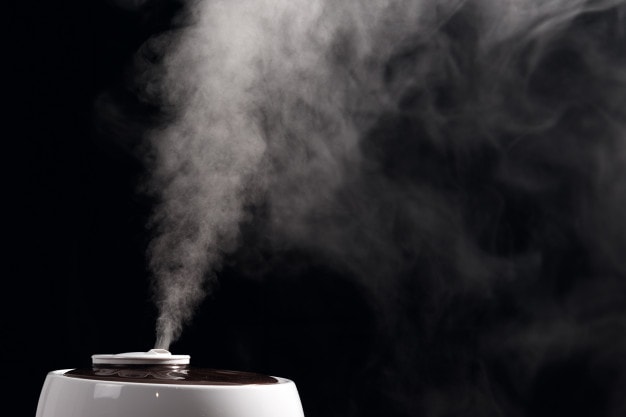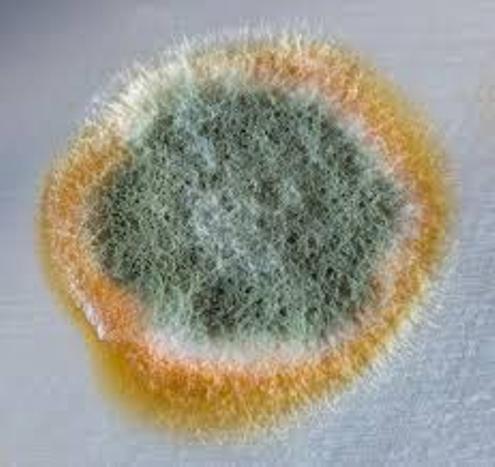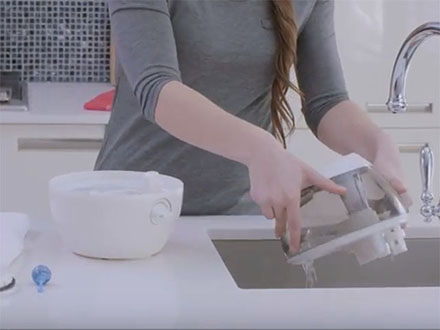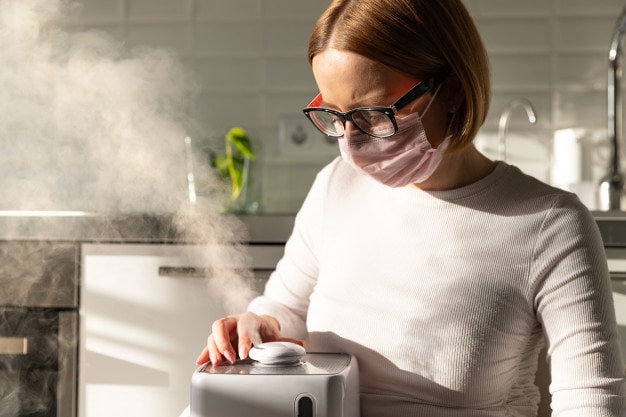If you own a humidifier, you might not be a stranger to mold in the appliance. However, new owners must know a few things about fungi prevention and treatment.
This article discusses mold formation, possible dispersion through the mist, and health issues caused by it.

What is Mold and Why is There Mold in My Humidifier?
Mold is a fungus that thrives in warm and moist spaces. Your portable humidifier is an ideal location for it to grow. You might notice multicellular patches growing around the tank walls or on the water. It forms in a day or two, so leaving the water in the appliance for a long time isn't a good idea.
What Is The Pink Mold In Humidifier?
Pink mold is the most common fungus found in humidifiers. It spreads via spores and stays in the air for a long time. It's dangerous for healthy individuals and even more so for people with respiratory diseases.
Mold can cause coughing, throat irritation, itchy eyes and skin, nasal congestion, and wheezing. In a humidifier, mildew can not only grow but also spread. When a moldy appliance pushes the water into the air, the spores will find their way into your room.

Photo credit: humidifiercompare.com
The spores can sit on any surface and continue breeding.
Thus, if you've ever had mold in a humidifier, make sure to clean and disinfect drapes, carpets, and furniture in your home. You might also need to invite professionals to get rid of the fungi thoroughly.
Besides milder problems, excessive exposure to the spores can cause asthma attacks, neurological problems, and irreversible health issues.
Humidifier Mold Prevention
Mold is hazardous for your health. If there are fungi somewhere in the house, the chances are high that you have mold all over the place. With a humidifier pushing contamination into the room, the spores are more likely to get everywhere. If any part of the container has a sign of it, turn off the device and clean it right away.
Fungi prevention is the first step you can take to ensure that the humidifier is doing more good than harm.
Clean Regularly
Rinsing the gadget every day and changing the water is a must. However, you should also deep clean the humidifier at least once a week. Here is how to do it:

Photo credit: honeywellpluggedin.ca
Use Additives
If this maintenance routine is too time-consuming, you might want to use additives. These substances are usually antibacterial and protect against mold growth.
What To Put In Humidifier To Prevent Mold?
So, what can you put in a humidifier to keep it clean and mold free? Here are some suggestions.
Tea Tree Oil
A few drops of this natural disinfectant will add a pleasant scent to your room while protecting the water from bacteria and mold. It also helps you breathe easier. This method is very beneficial for your respiratory system.
Humidifier Tablets
This store-bought solution is for portable humidifiers. One of the pros is that you can add it in and forget it until you need another one.
Hydrogen Peroxide
This is a simple option as the substance is inexpensive and efficient. It kills bacteria efficiently, has no odor, and you don't have to use it a lot.
White Vinegar
While efficient for mold prevention, safe for the appliance, and not harmful to your respiratory system, the vinegar smell might throw off some users.

Photo credit: aireserv.com
Use Filtered Water
Many experts advise using distilled water in your humidifier. There's no definitive conclusion that it can prevent mold growth. Still, tap water has many more minerals.
It's exposed to pipes and taps more, gathering potentially harmful substances that can cause buildup. Eventually, those particles could get into your room via the mist.
Follow Storage and Use Instructions
Humidifiers come with a guide to correct storage and maintenance. We recommend that you follow the manufacturer's directions on filter change frequency (if your appliance has one). To avoid mold, you should also clean, wipe, and let the appliance air dry before storing.

Conclusion
Mold in humidifiers can be dangerous for indoor air quality. Preventing it is easier than getting rid of it. However, you can still recover a moldy humidifier by deep cleaning the appliance. The process is straightforward, using the homemade remedies we have included in this article.
We recommend you air the room where the moldy humidifier operated. Ensure also to change the sheets, wash the carpets, and wipe surfaces. Doing this will allow you to avoid residue spores.
People Also Ask
Below are answers to a few frequently asked questions about the dangers of mold in humidifiers and treatment methods if it already happened. Keep in mind that mold is no joke, so you need to be mindful of its growth prevention and cleaning schedules.
Is Mold in a Humidifier Dangerous?
In short: yes. If there's mold in the humidifier, you need to dispose of the water and disinfect it immediately. It can cause mild and severe respiratory complications, mucous and lung infections, asthma attacks, and irreversible neurological conditions.

How Long Before Mold Grows in Humidifier?
Mold takes as little as one to two days to grow in a warm and humid environment. A humidifier, especially a warm mist type, is an ideal breeding ground for it. Hence, experts recommend changing the water and rinsing the tank in the appliance once a day.
How Do I Clean a Humidifier With Mold?
Use a soft brush and a vinegar, bleach, or a hydrogen peroxide combination to spot-treat the areas with mold buildup. Make a weaker solution with one of the mentioned substances, pour it into the tank and base, and let the parts sit for 15 to 30 minutes.
Afterward, rinse the appliance and fill it with clean (preferably distilled) water. If you're storing it, make sure to wipe all the components and leave them to air-dry before putting the humidifier away according to the manufacturer's instructions.
